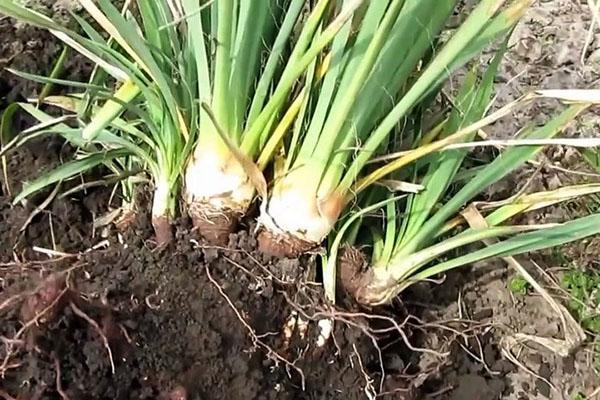Yucca filamentous garden courageously withstands the test
 Yucca filamentous garden feels great in the northern regions. Here she hibernates without shelter. Nevertheless, the edges of the leaves often freeze at her. The culture begins to wake up in mid-April. Young greens appear in the central part of the bush. Over time, the side foliage will turn yellow and die off. It is removed to preserve its decorative effect.
Yucca filamentous garden feels great in the northern regions. Here she hibernates without shelter. Nevertheless, the edges of the leaves often freeze at her. The culture begins to wake up in mid-April. Young greens appear in the central part of the bush. Over time, the side foliage will turn yellow and die off. It is removed to preserve its decorative effect.
Each rosette of a hardy plant blooms once in a lifetime. Then it just dries up, and in its place, one after another, children appear.
Yucca filamentous garden: division lessons
The culture is planted by dividing the rhizome. The procedure is advised to be carried out after flowering. First, a perennial specimen is dug up. Then the bush is divided into separate sockets. To clearly identify the divisions, the root system is washed with warm water. Then the gardeners:
- cut the flower into separate seedlings;
- trim leaves, removing dried out areas;
- remove fleshy roots, which are then also planted (placed at a depth of 10 cm);
- the root collar (white part) is deepened by 5 cm;
- compact the site.
Even if a small piece of rhizome remains in the ground, over time, several delicate shoots will sprout from it. Their number depends on how many kidneys it had.
Young seedlings will bloom only next year. They don't need extra care or watering. Yucca filamentous garden perfectly survives in arid conditions, extracting nutrients from the soil, as well as moisture. It has such endurance due to the special structure of the root system. From the main fleshy root, thin suction tentacles extend, which droop into the most inaccessible places.
Sanitary care
Many flower plants can envy her unpretentiousness. Still, stagnant water is dangerous for her. Therefore, drainage is done in too humid areas. The planting hole is dug deeper to cover the bottom with broken bricks and stones. As a result, the water will drain evenly. It is important to consider that the culture grows on any type of soil:
- black soil;
- sand;
- rocky substrate;
- clay.
To preserve the decorativeness of the filamentous garden yucca, it should be pruned from time to time. She also will not refuse additional watering, which is especially needed in dry summers. If you periodically make fertilizers, then the plant will delight the owner with lush foliage and unsurpassed flowering. Its snow-white brushes will be an amazing decoration of the garden for 30 unforgettable days.